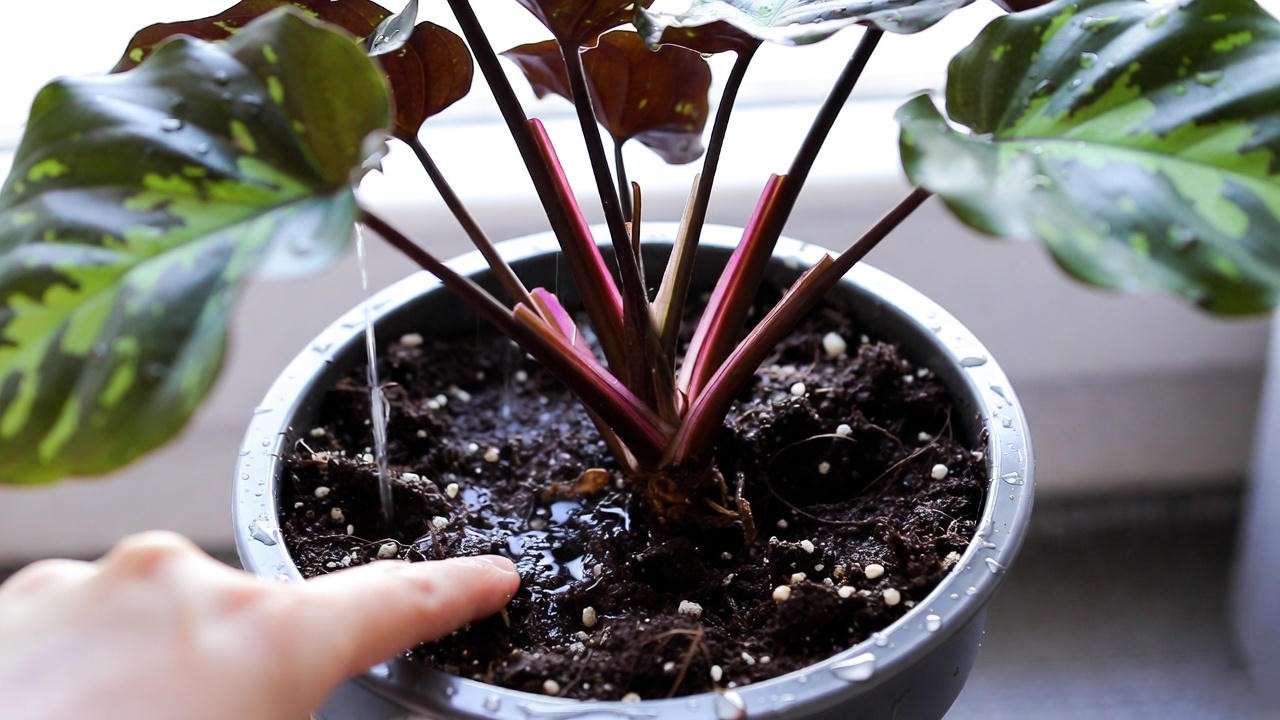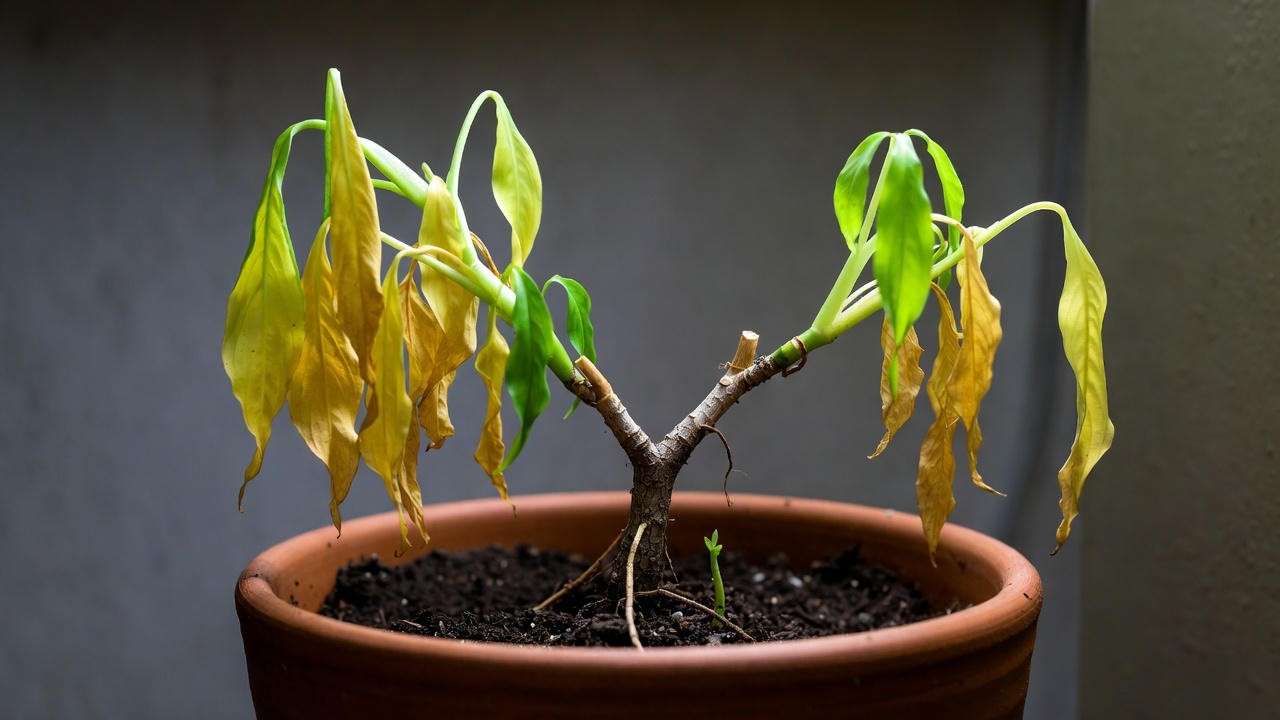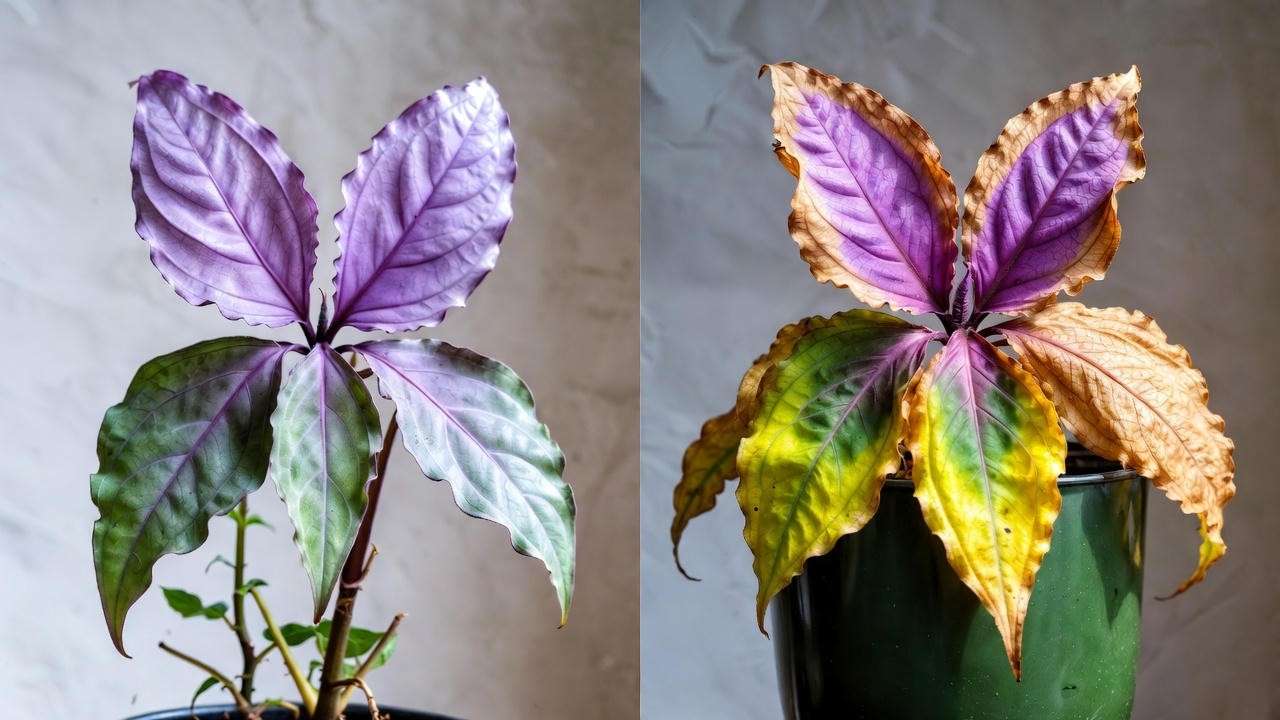Have you ever encountered a houseplant so dynamic, so saturated with color, that it seems to shift and flutter right before your eyes? That’s the unmistakable magic of the Purple Butterfly Plant. With its deep violet, triangular leaves clustered in groups of three, it truly gives the impression of a cloud of butterflies settling in your pot. While many houseplants offer static green beauty, this plant provides kinetic appeal, with its foliage dramatically folding closed at night or in low light, only to reopen and greet the sun—a phenomenon that captivates even seasoned gardeners.
Within the first few weeks of owning this beauty, many enthusiasts encounter their first major confusion: Why is my plant drooping? Is it dying? The answer lies in understanding its unique rhythm, specifically its dormancy cycle and specific needs regarding light and water. This is the ultimate, expert-led guide designed to eliminate the guesswork. We’re not just aiming for survival; we’re providing the definitive instructions for cultivating a truly vibrant, thriving purple butterfly plant that will remain a stunning focal point in your home or garden.
A. What is the Purple Butterfly Plant? (The Essential Identification)
The common name “Purple Butterfly Plant” typically refers to one of two distinct, yet equally beautiful, plants:
- Oxalis triangularis (The Primary Focus): This is the most common plant sold under the name. Known widely as the False Shamrock or Purple Shamrock, it is beloved for its deep purple, almost black, triangular leaves that resemble clover. Its small, delicate, light-pink or white flowers bloom consistently during its active growing season. This guide primarily focuses on the care of Oxalis triangularis due to its popularity and accessibility.
- Christia obcordata: This is the true, lesser-known “Butterfly Plant.” Its leaves are light green with striking purple or reddish markings that distinctly mimic the wings of a butterfly. It is a stunning, but much rarer, species often preferred by collectors. While the core principles of light and moisture control apply, Christia has more stringent humidity and temperature demands.
For the purpose of achieving vibrant color and reliable blooming—the two main goals of most growers—we will dive deep into the comprehensive care for the easy-to-grow, dynamic Oxalis triangularis.
B. Why Grow It? (The Appeal and Benefits)
The Oxalis triangularis isn’t just a novelty; it offers several benefits that make it an essential addition to any plant collection:
- Year-Round Color: Unlike many seasonal plants, the purple foliage provides rich, deep color, especially valuable during the drab winter months when grown indoors.
- Unique Foliage Movement: The nyctinasty (sleep movement) of the leaves, where they fold up in response to low light, adds an interactive, living quality few other plants possess.
- Easy Propagation: Its structure, based on small bulbs (rhizomes), makes propagating and sharing new plants incredibly simple and successful.
- Low Maintenance (Once You Know the Rules): Once you understand its light needs and respect its requirement for dormancy, the Oxalis is exceptionally hardy and forgiving.
C. The Promise:
By following this guide, you will master every aspect of its lifecycle. You will learn to recognize the subtle signals the plant sends regarding water and light, manage the crucial dormancy period without panic, and ensure your purple foliage remains rich and dark, guaranteeing a magnificent, vibrant display.
II. 💡 Getting Started: The Perfect Environment (H2)
Success with the Purple Butterfly Plant begins long before you water it. Setting up the optimal environment directly dictates the intensity of its color and the vigor of its growth.

A. Light Requirements: The Key to Color Intensity (H3)
Light is the single most critical factor for Oxalis triangularis. It directly impacts the plant’s color and form.
- Bright, Indirect Light is Ideal: The plant thrives in an environment where it receives abundant, diffused light for most of the day. A location near an East-facing window (which provides soft morning light) or a few feet away from a South or West-facing window (which provides intense afternoon light) is perfect.
- The Problem with Low Light: Inadequate light causes the leaves to stretch and become thin (legginess), and the signature purple color will fade, often turning the foliage an unappealing, paler greenish-purple shade.
- The Danger of Direct Sun: While Oxalis needs strong light, intense, unmitigated mid-day sun, especially in summer, can scorch the delicate leaves, leaving them with brown, crisp edges. Filter the sun with a sheer curtain if placing the plant in a high-intensity location.
Expert Insight: Rotate your plant’s pot weekly. This ensures all sides receive equal light, preventing lopsided growth and promoting a balanced, full canopy.
B. Soil and Potting: Keeping the Bulbs Happy (H3)
The health of your plant is rooted in its subterranean rhizomes. Providing them with the right growing medium is non-negotiable for preventing the most common killer: bulb rot.
- Ideal Soil Mix: Oxalis requires a soil mix that is well-draining and airy. A standard, high-quality indoor potting mix is a good start, but it benefits greatly from amendments. Mix 2 parts potting soil with 1 part perlite or coarse sand to enhance aeration and drainage.
- Importance of Drainage Holes: Never plant your Purple Butterfly Plant in a container without adequate drainage holes. Stagnant water around the rhizomes is a death sentence.
- Repotting Timing and Bulb Depth: Repotting is best done right before the plant comes out of its dormancy cycle in late winter or early spring. When planting the small, cone-shaped bulbs, ensure they are nestled about 1 to 1.5 inches deep in the soil. A container that is about 6-8 inches in diameter is usually sufficient, as the plant grows more from bulb multiplication than from deep root growth.
C. Temperature and Humidity: Mimicking the Native Habitat (H3)
Oxalis triangularis is surprisingly tolerant of typical indoor conditions, but it thrives within a specific comfort zone.
- Temperature Range: The ideal temperature range is between 60°F and 75°F (15°C to 24°C). Avoid sudden drops or blasts of cold air, especially from open windows or air conditioning vents, which can stress the leaves and trigger early dormancy.
- Frost Intolerance: While it can tolerate slightly cooler indoor temperatures, it is not frost-hardy and should be brought inside well before the first freeze if grown outdoors.
- Humidity: While not a tropical demanding plant, it appreciates average to slightly higher humidity. If your home is very dry (especially in winter with central heating), you can provide supplemental humidity using a nearby pebble tray filled with water or by grouping it with other plants. Direct misting, however, is often ineffective and can sometimes promote fungal issues on the dense foliage.
III. 💧 The Core of Care: Watering, Feeding, and Pruning (H2)
Mastering the dynamic care elements is what separates a struggling plant from a flourishing, vibrant specimen.
A. Watering Schedule: The Soak and Dry Method (H3)
Watering is where most beginners make mistakes, either drowning the plant or failing to recognize when it is truly thirsty.
- The Soak and Dry Rule: The cardinal rule for Oxalis is to allow the top inch or two of soil to dry out completely between waterings. When you do water, give it a thorough soak until water drains freely from the bottom drainage holes. This mimics its natural cycle of heavy rain followed by a dry spell.
- How to Check: Use your finger to check the soil depth. Alternatively, lift the pot; a very light pot indicates time for a drink.
- Adjusting Frequency Seasonally: Active Growth (Spring/Summer): Water regularly. Approaching Dormancy (Fall/Winter): Gradually reduce watering frequency to prepare the plant for rest.
- Troubleshooting: The Dangers of Overwatering: Overwatering is the number one cause of rhizome rot and subsequent collapse of the foliage. If the plant looks limp and the soil is wet, hold off on watering immediately. If the foliage is yellowing and mushy, bulb rot may be occurring.

B. Fertilization: Fueling the Blooms and Color (H3)
The Purple Butterfly Plant is not a heavy feeder, but proper nutrition supports vigorous growth and the production of its charming white or pink flowers.
- What Type to Use: A balanced, liquid houseplant fertilizer (e.g., 10-10-10 or similar ratios) diluted to half or even quarter strength is ideal.
- When to Fertilize: Only fertilize during the active growing season (typically spring through early fall). Applying fertilizer during dormancy is wasteful and can damage the bulbs.
- Schedule: A light feeding once every 4-6 weeks during active growth is plenty. Stop completely by early fall.
- Common Mistakes: Over-fertilizing leads to a build-up of salts in the soil, which can burn the rhizomes and roots. If you notice a white crust on the soil surface, flush the soil thoroughly with plain water and hold off on fertilizer for a month.
C. Pruning and Maintenance: Keeping the Display Tidy (H3)
Pruning the Purple Butterfly Plant is less about shaping and more about maintenance and revitalization.
- Deadheading Spent Blooms: Once the small flowers fade, gently pinch or snip off the spent flower stems near the base. This encourages the plant to put energy into producing more foliage and additional blooms.
- Removing Yellow or Leggy Foliage: As the plant ages or if lighting is inconsistent, individual leaves may turn yellow or become overly stretched. Cut these stems back at the soil line. This simple act encourages the rhizomes to push out fresh, new growth, leading to a denser, more attractive canopy of deep purple foliage.
IV. 😴 Understanding Dormancy: Why Your Plant “Dies” and Comes Back (H2)
This section is vital for maintaining gardener sanity. The Purple Butterfly Plant’s dormancy is its built-in survival mechanism, not a sign of failure.
A. The Dormancy Cycle Explained (H3)
- A Natural Rest Period: Oxalis triangularis, originating from regions with distinct dry seasons, requires a natural rest period, usually lasting between 2 to 4 weeks, to conserve energy and prepare for the next vigorous flush of growth. This often occurs in the cooler, lower-light months of late fall or winter, but can be triggered any time the plant is stressed (e.g., lack of water, extreme heat).
- Recognizing the Signs: The plant will visibly slow its growth. Leaves will start to droop, turn yellow, and eventually brown. This is normal! The energy is being withdrawn from the foliage and stored securely in the rhizomes beneath the soil.

B. Guiding Your Plant Through Rest (H3)
When you notice the signs of dormancy, you need to change your care routine immediately.
- Stop Watering and Fertilizing: The plant no longer needs water to sustain foliage, and continued watering will only lead to rot. Cease all fertilization.
- Move the Pot: Cut back all remaining limp foliage down to the soil line. Move the pot to a cool, dark, dry location, such as a garage, basement shelf, or back corner of a closet. The ideal resting temperature is around 50°F to 60°F (10°C to 15°C).
- Duration of Dormancy: Leave the plant to rest for at least 2 to 4 weeks, though some growers extend this to 6 or 8 weeks for a deeper reset.
C. Waking Up the Bulbs (H3)
This is the most rewarding stage—the return of the magic!
- The Trigger: After the rest period, bring the pot back to its original location with bright, indirect light.
- Restart Watering: Begin watering very lightly—just enough to dampen the soil—and gradually increase the frequency as you observe signs of life. New, delicate shoots will begin emerging from the soil surface within a few weeks.
- The Spectacular Return: Once the new growth is established, resume your regular watering and feeding schedule. The plant will return fuller, healthier, and often with more intense purple coloring than before.
V. ✂️ Propagation: Multiply Your Magic (H2)
One of the great joys of the Purple Butterfly Plant is how easy it is to create new plants. Propagation is nearly guaranteed through the division of the underground bulbs.
A. The Easiest Method: Dividing the Bulbs (H3)
- Best Time for Division: The absolute best time is just as the plant is coming out of dormancy or when you are planning to repot it in early spring. This minimizes stress on the new divisions.
- Step-by-Step Guide:
- Gently unpot the plant and shake away the loose soil.
- You will find clusters of small, cone-shaped, brown rhizomes (bulbs).
- Gently pull apart these clusters. Each cluster containing a bulb or two can form a new plant. If you find single, healthy bulbs, you can plant those too.
- Plant the individual rhizomes about 1 inch deep in small, separate pots filled with fresh, well-draining soil.
- Water lightly and place in bright, indirect light.

B. Starting New Plants from Leaf Cuttings (H3)
While bulb division is the primary method, you can experiment with leaf cuttings. Cut a healthy leaf stem (petiole) right at the base of the plant. Place the end of the stem in water or lightly moist soil. While they may root, they generally won’t produce a new plant unless the cutting also includes a tiny piece of the rhizome tissue, making this method much less reliable than bulb division.
VI. 🛑 Troubleshooting and Pest Management (H2)
Even the best-cared-for Purple Butterfly Plant can face a few issues. Being able to quickly diagnose and treat problems is the hallmark of an experienced grower.
A. Common Care Problems Solved (H3)
- Problem: Leaves are greening instead of purple.
- Diagnosis: Insufficient light. The plant is reverting to green to maximize chlorophyll production and capture the low light.
- Solution: Move the plant to a location with significantly more bright, indirect light. The rich purple color will return to new growth quickly.
- Problem: Plant is limp/droopy but not dormant.
- Diagnosis: Often, extreme water issues. Check the soil: if it’s bone dry, it needs water immediately. If it’s soaking wet, the rhizomes are likely struggling from rot.
- Solution: If dry, water thoroughly. If wet, let the soil dry out completely and check for rot before resuming watering.
- Problem: Lack of blooming.
- Diagnosis: Usually, a combination of factors: insufficient light, lack of nutrients, or the plant has not experienced a necessary rest (dormancy) period in the past year.
- Solution: Ensure it gets enough bright light and has had a recent dormant rest. Resume light fertilization during the growing season.

B. Identifying and Treating Pests (H3)
The dense, clustered nature of the purple foliage can sometimes hide small pests.
- Fungus Gnats: These small, annoying flies are attracted to perpetually moist soil, a sign of overwatering.
- Treatment: Reduce watering, allow the top 2 inches of soil to dry out completely. Apply beneficial nematodes or sticky traps.
- Spider Mites & Aphids: These can occasionally target Oxalis, often on the undersides of the leaves.
- Treatment: Treat immediately upon sighting with a thorough application of Neem oil or an insecticidal soap spray. Repeat the application every 5-7 days for several weeks to break the pest lifecycle.
VII. 🥇 Expert Q&A: Advanced Tips & Fun Facts (H2)
A. Can the Purple Butterfly Plant be grown outdoors?
Yes, but only seasonally in most areas. Oxalis triangularis is generally hardy only in USDA Zones 8-11. In all other zones, it can be grown as an annual or overwintered indoors as a houseplant or stored in its dormant state. When planting outdoors, choose a location with filtered sun or morning sun, as full, harsh sun will scorch the leaves quickly.
B. Is the Purple Butterfly Plant toxic to pets or humans?
Yes, this is critical safety information. Oxalis triangularis is generally considered mildly toxic to both humans and pets (dogs, cats, etc.). It contains oxalate crystals, which can cause mouth irritation, excessive drooling, or vomiting if ingested in large quantities. Always keep this plant away from curious pets and small children.
C. Does it really “move”?
Absolutely! The leaf movement you observe is called nyctinasty. The triangular leaflets fold downward and close up at night (or in response to low light or physical touch/stress) and then open again when the light level increases. This unique trait is thought to be a defense mechanism to protect the delicate leaves from harsh conditions, such as frost or intense sun, or perhaps to deter pests. This kinetic quality is truly one of the most magical aspects of the plant.
VIII. ✨ Conclusion: Your Journey to Mastery (H2)
You are now equipped with the expert knowledge to not only grow the Purple Butterfly Plant but to truly master its cultivation. By focusing on its specific needs, particularly bright, indirect light to maintain that spectacular color, employing the soak and dry watering method to protect the rhizomes, and respecting the necessity of its dormancy cycle, you will secure its place as a healthy, vibrant, and long-lived treasure in your collection.
The Purple Butterfly Plant is remarkably resilient and forgiving. Embrace its natural rhythm, enjoy its fluttering foliage, and watch as your care results in the magnificent, rich purple display it is meant to provide.













